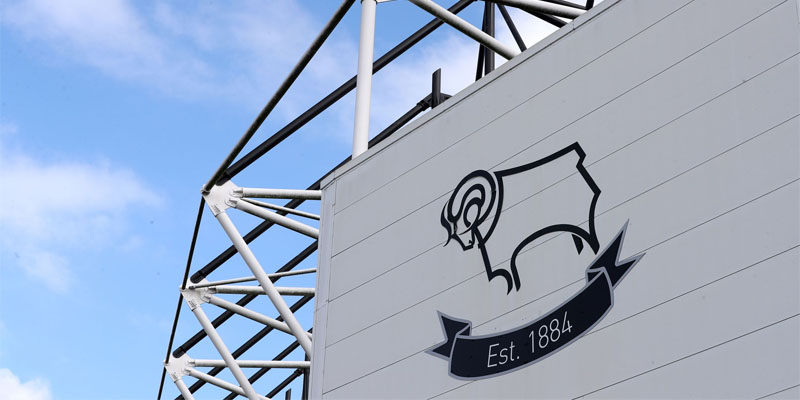
Derby County Football Club: The Rise, Challenges, and Legacy
Derby County Football Club, established in 1884, boasts a rich history marked by notable achievements, passionate fans, and significant challenges. This blog post aims to delve into the multifaceted journey of the club, exploring its historical roots, key milestones, and its current standing within the English football league system.
Introduction to Derby County Football Club
The story of Derby County Football Club is one that resonates deeply with football enthusiasts. With its deep-rooted culture and history, the club has become synonymous with the passion for football in England. Situated in the heart of Derby, the club has not only engaged locals but also attracted fans from across the globe. The iconic Pride Park Stadium, which serves as their home ground, has hosted countless memorable moments over the years, embracing the highs and lows that come with a storied footballing legacy.
The club’s foundation was laid during a time when football was evolving into the beloved sport we know today. Since its inception, Derby County has been at the forefront of numerous significant changes within the football world, adapting to modernity while retaining its core values. This adaptability has played a crucial role in the club’s resilience through triumphs and struggles alike.
History and development of the club
The origins of Derby County Football Club can be traced back to the late 19th century. The club was formed by a group of cricketers who decided to create a football team to keep themselves active during winter months. Initially, they played friendly matches before joining the Football League in the 1888-89 season. This was an era where football was still finding its feet, and Derby County quickly emerged as one of the pioneering teams in the league.
Over the decades, the club experienced various phases, including periods of great success and challenging times. During the early 20th century, Derby County began establishing itself as a formidable force in English football, securing their first major trophy in 1890—the FA Cup. It was a moment that would set the stage for future successes.
In the post-war era, particularly during the 1960s and 70s, the club reached new heights. Under the management of the legendary Brian Clough, Derby County won the top-flight league title in 1972 and followed this up with a second triumph in 1975. Clough’s innovative tactics and fiery personality transformed the team, turning them into a force to be reckoned with on the national stage.
As the years rolled on, Derby County faced fluctuating fortunes, with relegations and promotions punctuating its history. Each setback brought lessons learned, reinforcing the club’s identity and connection with its fan base. The resilience shown during these turbulent times showcases the indomitable spirit that characterizes Derby County Football Club.
Key achievements in the club’s history
Throughout its storied past, Derby County Football Club has achieved several significant milestones that have etched its name into the annals of English football history. Winning the FA Cup in the early days set the tone for future accomplishments, but it was the two league titles under Brian Clough that truly defined the club’s golden era.
In addition to domestic success, Derby County also made a substantial impact on the European stage. They participated in the inaugural European Cup in 1955-56 and later earned a spot in the UEFA Cup after finishing as runners-up in the 1983-84 season. These contributions helped elevate the club’s status, showcasing its competitiveness beyond British shores.
While the club has experienced its fair share of struggles, the unwavering tenacity of its players and management has often led to remarkable comebacks. One such example occurred in the late 1990s when the team managed to avoid relegation in dramatic fashion, cementing its reputation as a club that never backs down from a challenge.
The club’s commitment to youth development has also yielded remarkable talents over the years. Players like Roy McFarland, who became a key figure in the club’s defence, showcased the importance of nurturing homegrown talent. Such efforts have ensured that the legacy of Derby County continues to thrive, inspiring future generations to embrace the beautiful game.
Progress and improvements in recent years
In recent years, Derby County Football Club has placed a renewed focus on its long-term vision, combining efforts on and off the pitch to strengthen its position within the English football hierarchy. The club’s administration has prioritized investment in infrastructure, training facilities, and player development programs to foster a sustainable approach to success.
One of the most notable advancements has been the establishment of a state-of-the-art training complex, providing aspiring athletes with world-class resources to hone their skills. This commitment to cultivating young talent has seen several academy graduates break into the first team, adding depth and dynamism to the squad.
Furthermore, the strategic hiring of experienced coaches has contributed to the club’s tactical evolution. By embracing modern coaching methods and analytical approaches, Derby County has sought to enhance its performance in the Championship, aiming for promotion to the Premier League. The club remains committed to developing a cohesive playing style that resonates with its history while adapting to contemporary football dynamics.
The importance of building a strong community connection has also come to the forefront. Derby County Football Club has taken significant steps to engage with fans, hosting initiatives that promote inclusivity and social responsibility. By fostering a sense of belonging, the club aims to create a loyal support base that thrives on shared experiences and collective aspirations.
Conclusion
In conclusion, Derby County Football Club embodies the essence of English football, characterized by a rich history of triumphs, struggles, and an unwavering bond with its supporters. As the club continues to navigate the competitive landscape of the Championship, its commitment to resilience, community, and sustainability chart a positive course for the future.





